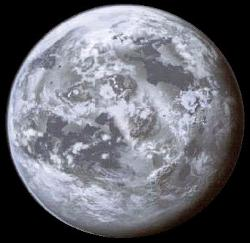 Eriadu was the primary world in the Seswenna sector, and one of the Outer
Rim's most active trade centers. It sat on the intersection of several hyperspace routes, including the Rimma Trade Route, the Hydian
Way, the Lipsec Run, and the Yankirk Route.
The planet had originally been on the Eriadu Bypass until the Hydian
Way was remapped to run through Eriadu (reflecting economic
realities) rather than Seswenna. It was an important launch point for
ships headed to the Moddell sector, such as the colony ship Free Enterprise in 130 BBY.
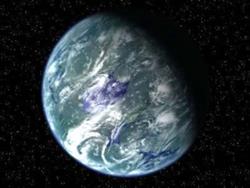 Endor (also known as the Forest Moon of Endor and the Sanctuary Moon) was a small forested moon orbiting the gas giant planet of Endor and was the farthest moon away from it. An enchanted world, Endor was notable for being the native home of the Ewoks, and being the location of the Battle of Endor, which would result in the downfall of the Empire and the first death of the Emperor Palpatine. Due to its proximity to the Unknown Regions, Endor was a relatively quiet planetoid both prior to and after the battle. Endor was also known for the vast amount of sentient species it supported, from baseline to exotic. This was largely due to the unusually large number of shipwrecks Endor experienced; it has been compared to a "desert island" in space. The mantle of the moon consisted largely diorite and feldspar, although Endor was a volcanically active planetoid with several hotspots,
Endor's terrain was largely covered by massive, tightly-knit pine and redwood
forests. However, the Forest Moon also contained vast dry
deserts and grassy plains, small oceans, secluded lakes, and mountain ranges. The moon's low axialtilt and regular orbit of its gas giant primary helped ensure a comfortable climate. The Forest Moon was temperate and mild, with polar caps regulating the sea levels. Flora life included cambylictus trees and other large plants, thriving with many types of fruit including the Grava berrys. Endor was the second moon of the gas giant it orbited.
The forest moon was home to the Ewoks, famous for helping defeat the Empire athe Battle of Endor. The four other native sentient species were the tall and timid Yuzzums, amphibious Gorphs, and the mischievous and treacherous genetic Ewok cousins, Duloks. The moon also boasted other slightly stranger beings, such as Mount Sorrow or the Sun King, or even the fairy like Wisties.
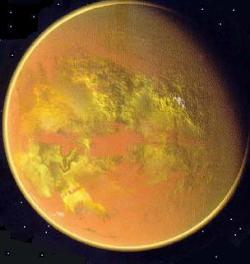 Duro (also known as Duros) was the heavily polluted and depopulated homeworld of the Duros species. Located on the Corellian
Trade Spine in the Core, the planet itself was mostly abandoned, mainly housing food processing plants. Most of the population lived in one of the twenty orbiting cities. Duro was also home to a large number of orbital shipyards.
Duro was surveyed by the Columi in 100,000 BBY, but the Columi were not impressed and passed it off as a primitive failure, little knowing that the inhabitants of the world, the Duros, would become a space-faring species in the years to come. Under the Infinite Empire, Duro was a slave world, and helped create the Star Forge 30,000 BBY. Following a plague that struck the Rakata, the Duros rebelled in 25,200 BBY. The Duros then formed a hereditary monarchy. It was based at Ranadaast, a city named after Queen Rana Mas Trehalt, which fell into disrepair and was infested by criminals when the monarchy fell into decline. Several years after the fall of the monarchy, Duro became a member world of the Herglic Trade Empire, the most powerful government in the Core Worlds region at the time.
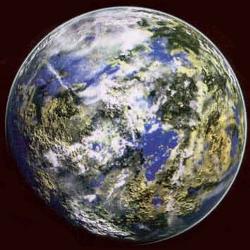 Dathomir was an obscure planet in the Outer
Rim Territories, located in the Quelii sector. It was somewhat smaller than Coruscant in size, and had slightly-below-standard gravity, but the planetary day was close to standard,
and the planetary year was long, lasting 491 days. Dathomir had four moons.
Dathomir was considered a temperate and beautiful planet by Human standards, with a varied terrain that
included coastal lakes and tar-pits, thick forests and snow-capped mountain
peaks, powerful rivers and broad savannas, small icecaps and dramatic rift
valleys. Even under the New Republic, however, nine-tenths of the planet
remained unexplored and uninhabited, with the population limited to a relatively small area along the edge of one of the three main continents, a zone of uplands and river plains bounded on one side by the unsailed ocean and on the other by vast expanses of desert.
Although the two cultures most closely associated with Dathomir were the
ancient spacefaring Kwa and the Human group known as the Witches
of Dathomir, it should not be overlooked that the semi-sentient species at the apex of Dathomir's native food-chain was in fact the mighty rancor.
The fact that the rancors were semi-sentient often came as a surprise to
unsuspecting offworlders. It is not clear whether they had made any independent progress towards basic tokens of civilization like kindled fire or shaped tools, and their social system and lifestyle were little different from those of many nonsentient animals: matriarchal herds led by herd-mothers roamed the landscape, hunting live prey for food. But they passed on their clan histories from generation to generation, and when they formed a symbiont circle with the planet's Human population in the last centuries of the Galactic Republic, they adopted basic armor and weapons. Under the New Republic, Tosh, herd-mother of the rancor group, associated with the Human Singing Mountain Clan, learned to read and write, and began to pass on this skill to the other rancors of her herd.
Dathomiri rancors were also larger than off-world specimens, with full-grown
adults in the range of eight to ten meters tall. This extreme size can in part
be attributed to the planet's low gravity, which allowed native trees to rise up
to eighty meters tall, but it may also reflect a more general effect of the
sheer vibrancy of the planet's biosphere. The temperate climate and varied
terrain had given rise to a dramatically diverse ecosystem, thriving with so
much life that the air almost seemed to sparkle in the Force. Other native fauna included the rancor's major prey species, the drebbin and ssurrians, as well as the burra fish, the simian pack-hunting purbole and the acid-jawed, insectile shear mite.
However, several of Dathomir's most important species, notably Humans, had arrived on Dathomir over the millennia as the result of off-world contacts.
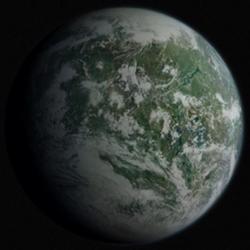 Dagobah was an Outer Rim planet in the Dagobah system. A remote world of swamps and forests, it served as a refuge for Jedi Grand Master Yoda during his exile, but otherwise had no notable intelligent life.
Dagobah was a harsh, humid, swampy planet, mostly covered in shallow marshland,
interspersed with stifling forests and at least one cave. There were very few truly open bodies of water on the planet: the water supply was thinly invested throughout the planet's main habitat, swampland, although there were vast expanses of mud fields. Dagobah was home to many creatures, such as bogwings, dragonsnakes, nudj, sleens, vine snakes, and swamp slugs. Examples of flora included the Adder moss, the hassling,Gnarltree and Meat flower. The planet was devoid of any
advanced civilization.
Hundreds of years before the Clone Wars, the Jedi Minch battled and killed a powerful Bpfasshi Dark Jedi on the planet. The Dark Jedi's energies absorbed into its surroundings, tainting the planet with the dark side.
The planet seldom appeared in astrography charts and it was discovered and
re-scouted several times. The first official Republic survey of Dagobah occurred in 39 BBY. A team of Alderaanian explorers were stranded there but
were devoured by wildlife, while a pre-Clone Wars expedition was forced to
resort to cannibalism.
In early 22
BBY, just prior to the outbreak of the Clone Wars, a Republic
research team under Halka Four-Den was stationed on Dagobah to
research the native flora and fauna. From even the initial assessment, the team concluded that Dagobah was crawling with an incredible diversity of life, and made notes to recommend Dagobah for more extensive surveys, given the likely advances in genetics and medicine that even a few of its lifeforms would cause. Unfortunately, Halka Four-Den and her research team died on Dagobah before they could be retrieved.Likely due to the outbreak of
the Clone Wars, their distress signals were ignored until it was too late. The
few survivors were forced to raise their children as cannibals.
At the outbreak of the Clone Wars, Jedi Master Yoda was quick to recall Master Kenobi's search for Kamino, a lost planet beyond the Outer
Rim. He knew that if Kamino was deleted from the Jedi Archives, other such planets must exist.
He discovered thirty-seven such worlds, Dagobah was one of them. He passed over it, but not before considering it as a refuge.
Dagobah was located within Separatist space during the Clone Wars.
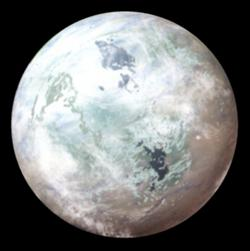 Csilla, the homeworld of the Chiss, was a cold world of glaciers and snowy wastes located deep within Chiss Space, and served as the capital of the Chiss Ascendancy. Sometime around 27,500 BBY, Humans arrived on Csilla in a sleeper ship and colonized the planet. [4] The planet entered an ice age in 5,000 BBY. Glaciers covered the normally-warm equatorial regions of the planet, while solid ice locked the poles in perpetual winter. In order to survive, the Chiss built energy-efficient warrens beneath the ice, as close to the warmth of the inner planet as possible, with underground carriage travel routes to connect the various underground sections of Csilla. The iceways were bored through the bedrock of the planet, so that they were unaffected by the shifting ice found on the planet's surface. Locked in an ice age for millennia, Csilla forced many socioeconomic and technological changes upon the Chiss, but few physical changes. Contrary to beliefs in a link between the Chiss skin color and the Csillan temperature, scientists concluded that the Chiss’ blue skin was caused by a mineral found in the Csillan hydrosphere. During the Great Galactic War, negotiators from the Chiss Ascendancy—the Chiss' government—and diplomats of the Sith Empire met in a summit, which resulted in the Ascendancy offering resources, tax revenues, and armies to the Empire in return for its sovereignty; as part of the decision, no Imperials would enter Csilla without permission. Csilla was the capital of the Chiss Ascendancy.It was also home to the Expeditionary Library. Grand Admiral Thrawn was born here.
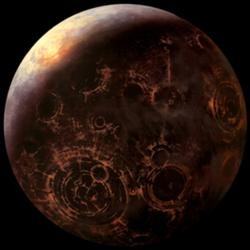 Coruscant originally called Notron, also known as Imperial Center or the Queen of the Core, was a planet
located in the Galactic Core. It was generally agreed that Coruscant was, during most of galactic history, the most politically important world in the galaxy. At various times, it was the capital of the Galactic Republic, the Galactic Empire, the New
Republic, the Yuuzhan Vong Empire, the Galactic Alliance, very briefly the Fel
Empire, Darth Krayt's Galactic Empire and the Galactic Federation Triumvirate. In controlling Coruscant, these governments controlled most of the galaxy in the process.
Over the centuries, Coruscant had developed into an ecumenopolis, with a total of 5,127 levels of city built up from the crust by the time of the Clone Wars. The actual planet-wide metropolis of Coruscant was called Galactic City. Under the Galactic Republic, the names Republic City or the City of Spires were also used to reference the city. It was also called Imperial City under the Galactic Empire, and New Republic
City under the New Republic. However, in practice, Galactic City and its other
names were sometimes applied to the Senate District, the central government center and de facto capital of Coruscant. Under the Yuuzhan Vong, the city and planet were both referred to as Yuuzhan'tar.
Coruscant was a planet located in the Core Worlds. Located at the intersection of numerous major hyperlanes— including the Perlemian
Trade Route, the Corellian Run, the Metellos
Trade Route, the Koros Trunk Line, and the Leisure Corridor—its hyperspace coordinates were (0,0,0) which effectively made it the center of the galaxy. These coordinates also inspired the planet's military designation, "triple zero," though the actual galactic center was located in the Deep
Core. As the de facto center of the galaxy, however,
Coruscant was generally agreed to be the most important planet throughout most of galactic history, as well as being on of the wealthiest due to its advantageous location.
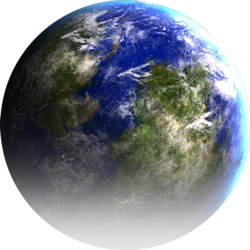 Corellia was the capital planet of the Corellian system, which included Selonia, Drall, Tralus, and Talus. It was also the birthplace of smuggler and New Republic General Han Solo as well as Rogue Squadron pilot and New Republic hero Wedge Antilles, along with many other humans who played important roles in the histories of the Rebel Alliance, New Republic, and Galactic Alliance. Collectively, the planets of the system were known as the Five Brothers. As the largest planet and the closest to Corell, Corellia was often called the "Eldest Brother" or the "Eldest." Historians believed the Celestials assembled the system artificially, the worlds brought from other parts of the galaxy for unknown reasons. Some believed that these Celestials populated Corellia with Humans from Coruscant. Corellia's surface was extremely temperate, dominated by rolling hills such as those of Bindreg, thick forests, lush farmland, golden beaches, and large seas. Snow-covered mountains dominated part of the landscape. With most of its famed manufacturing centers lifted into orbit, the planet remained largely rural and undeveloped, with small villages and farming communities comprising the bulk of urban development. It is rumored to have many deep underwater caverns with orange Lightsaber crystals. The largest cities were Coronet—the planetary capital, the tourist haven of Kor Vella, the double-city Tyrena, and the mountain hamlets of Doaba Guerfel and Bela Vistal. Immigrants from the neighboring planet of Selonia constructed an elaborate network of tunnels beneath the planet's surface. These Selonian Tunnels were used by people of all races as a kind of subterranean metropolis, though the deepest levels were traveled exclusively by Selonians. Space above Corellia was dominated by massive shipyards.
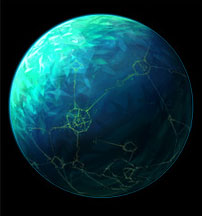 Christophsis was a crystalline world in the Outer Rim Territories' Savareen sector. Orbited by a single moon amongst the mineral-rich asteroids of the Christoph system, Christophsis was for a time a target for stray rocks because of its closeness to various asteroid belts, but the planet was refined by Tepasi nobles around 600 BBY, and later by the world's native Christophsian inhabitants, who originated as Humans from the Core. Christophsis was eventually protected from the asteroids and transformed into the center of a mining hub. By the time of the Clone Wars, the Christophsians ruled their homeworld in a mercantile oligarchy and had established Chaleydonia, also known as Crystal City, as their planet's capital. Various species also immigrated to the world, including Rodians, Kerkoidens, and lower-caste Humans who came to serve the Christophsians. All of the Christophsians' hard work was ultimately crippled when the Separatist-backed Retail Caucus conglomerate seized Christophsis in the second year of the Clone Wars, with the feared Admiral Trench blockading Christophsis and General Whorm Loathsom subjugating the Christophsian people. Although a Jedi-led battle group from the Grand Army of the Republic eventually liberated Christophsis, the costly Republic victory reduced several key cities to rubble. The Separatists later returned to the planet to mine for its crystals to fuel their new superweapon, the Devastation, a plot that was halted by Senator Padmé Amidala and the Jedi Order. Eventually, with the establishment of the New Order, Christophsis became a reluctant member of the Galactic Empire but ignored all of the following galactic governments.
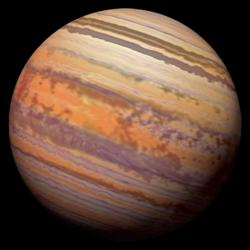 Byss was a planet in the Deep Core, near the center of the galaxy, discovered no earlier than 45 BBY. A local day lasted 31 standard hours and a local year lasted 207 local days. It was the endpoint of the Byss Run.
Byss itself was somewhat of a myth, seeming to be the perfect place to live.
Its eerie blue-green glow, caused by its sun, also added to the strangeness of
the world. Despite this outward appearance, however, Emperor Palpatine's dark side energies were everywhere, corrupting not only the
inhabitants, but the planet itself.
Byss was the secret throne world of Palpatine and the location of his
towering Imperial Citadel. He also kept his secret supply
of clone bodies there.
Byss was a mythic paradise world enshrouded in the dark
side of the Force, located within the isolated and nearly
inaccessible Deep Galactic Core. It was situated at the end of
the Byss Run, a heavily guarded artificial hyperlane kept open by hundreds of non-mass S-thread boosters, connecting the planet to the Core Worlds. The planet was otherwise nearly impossible to reach safely through hyperspace, due to the high density of stars in the Deep Core and the constantly
shifting patterns of the region's natural hyperlanes. Byss was the fifth planet of
the Beshqek system and orbited the star Beshqek; it was one of two habitable planets in the system, the other being Relus. The planet was orbited by five moons, which had little influence on its tides.
|










